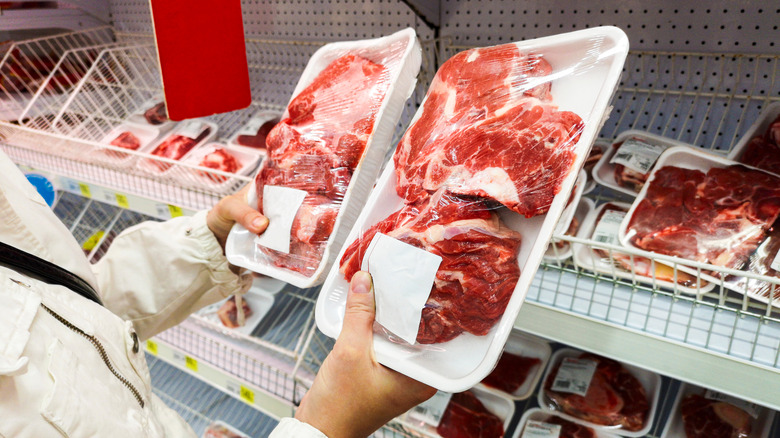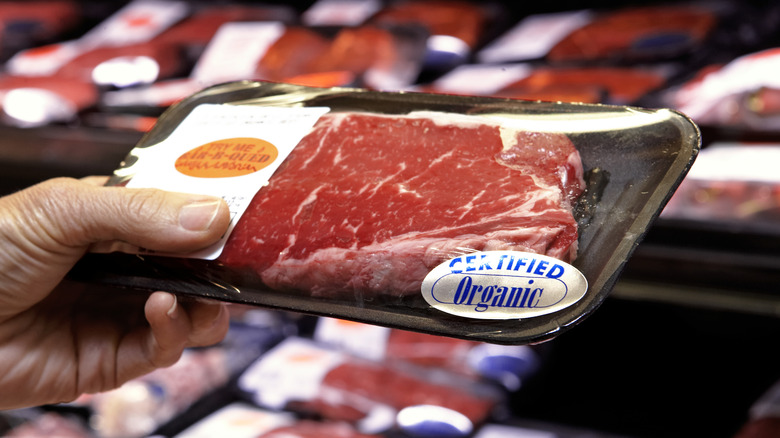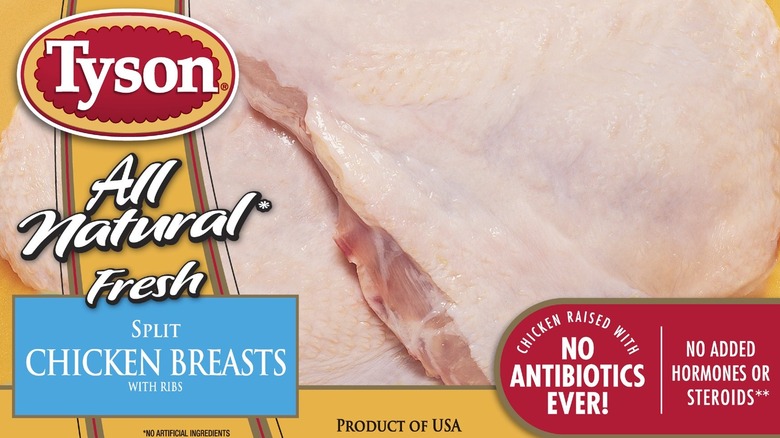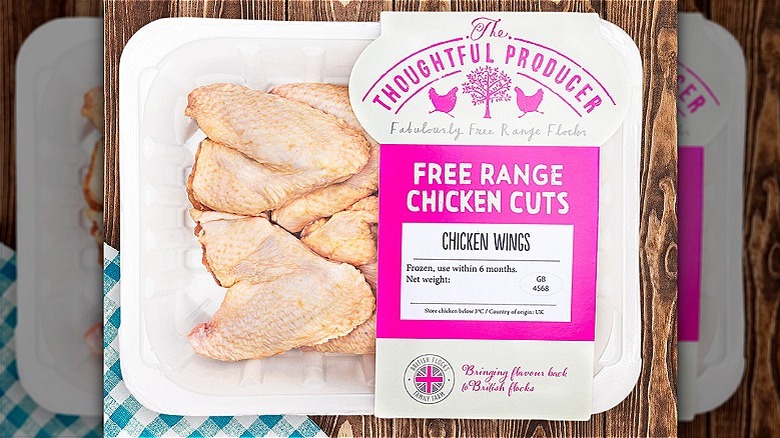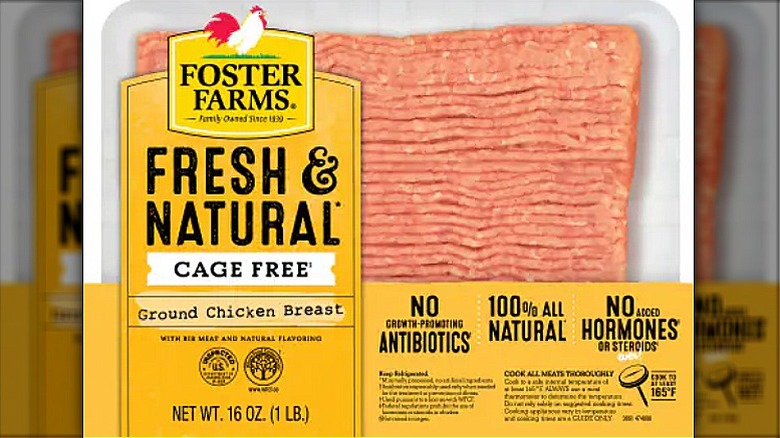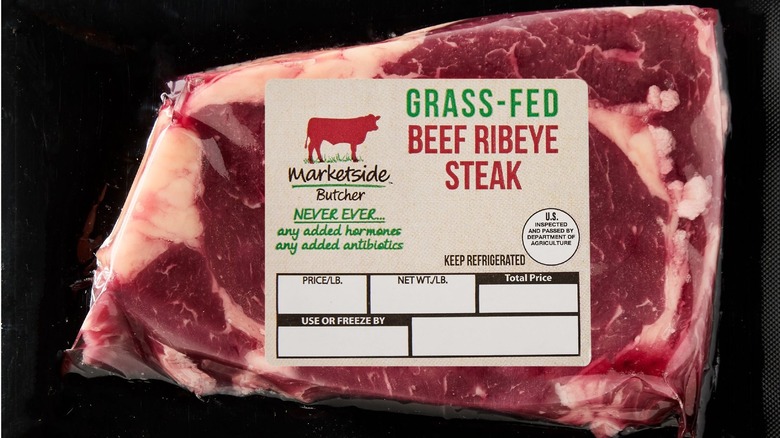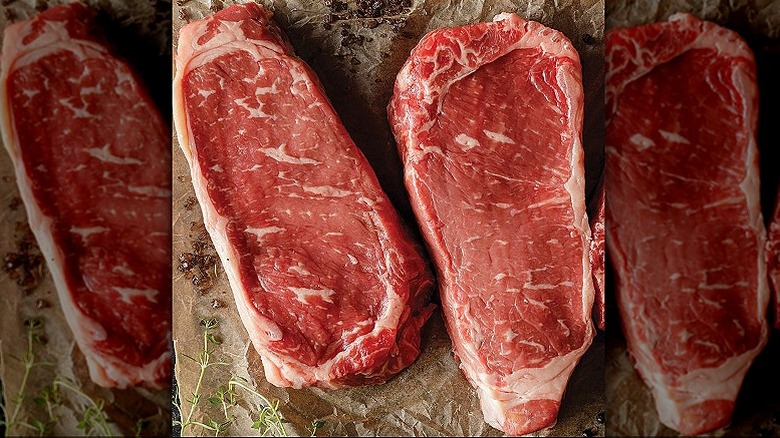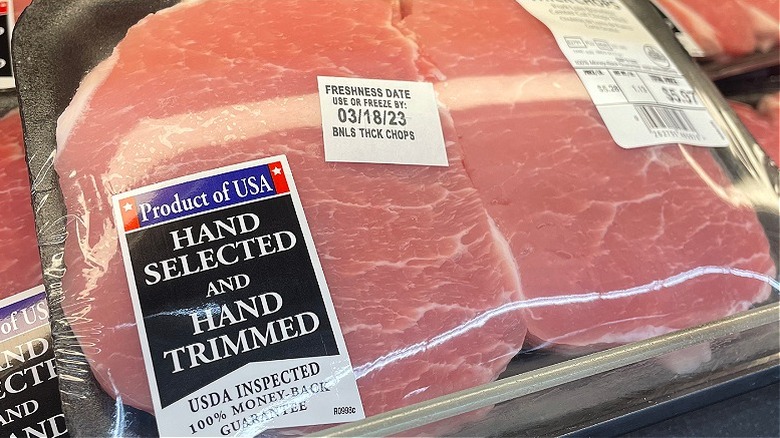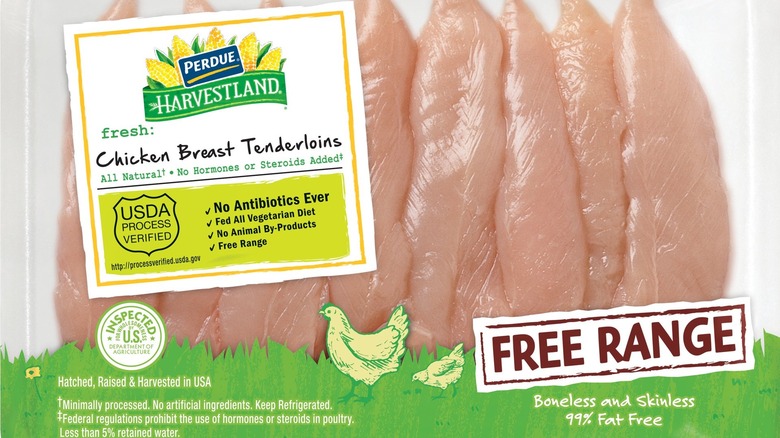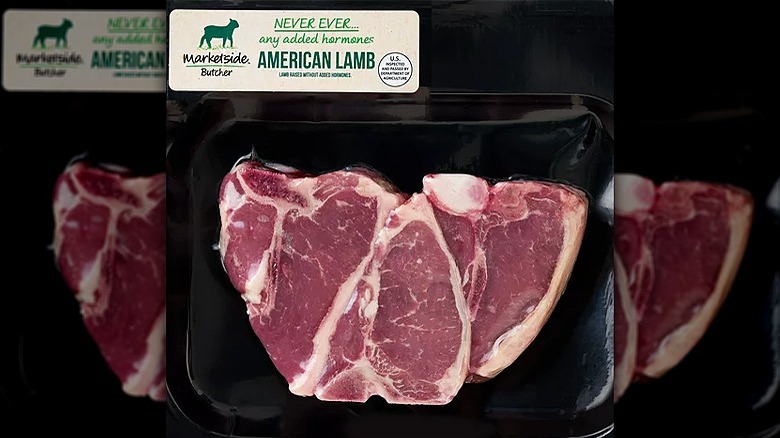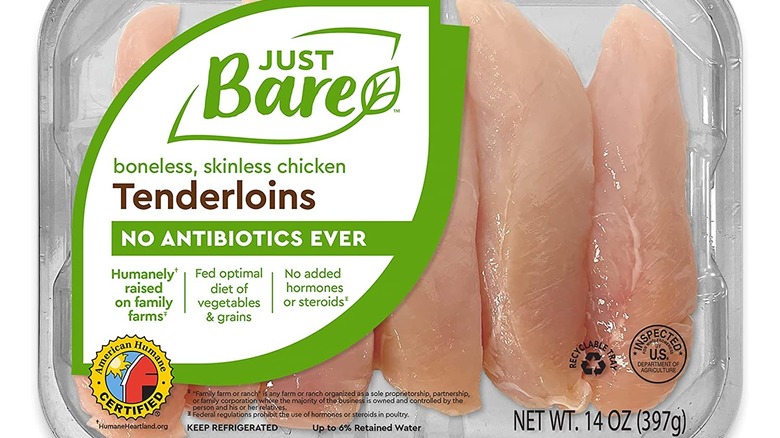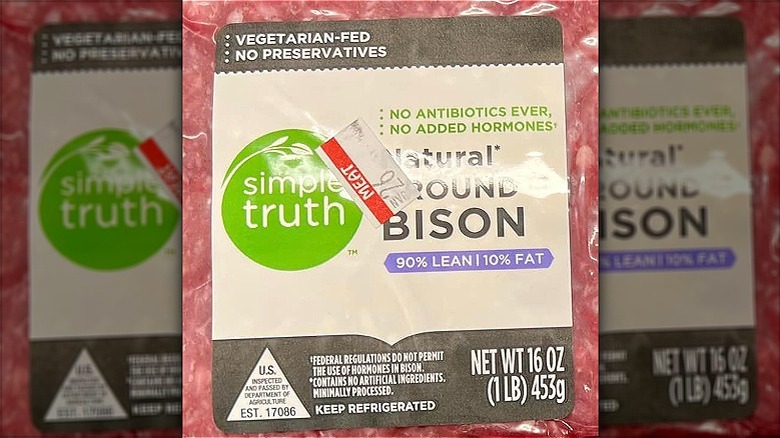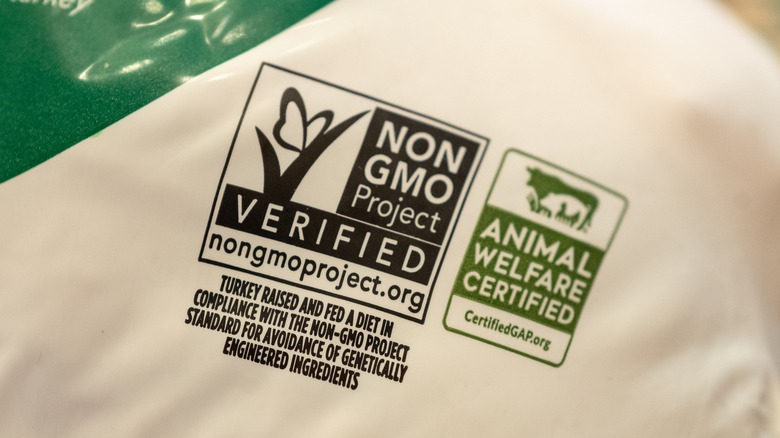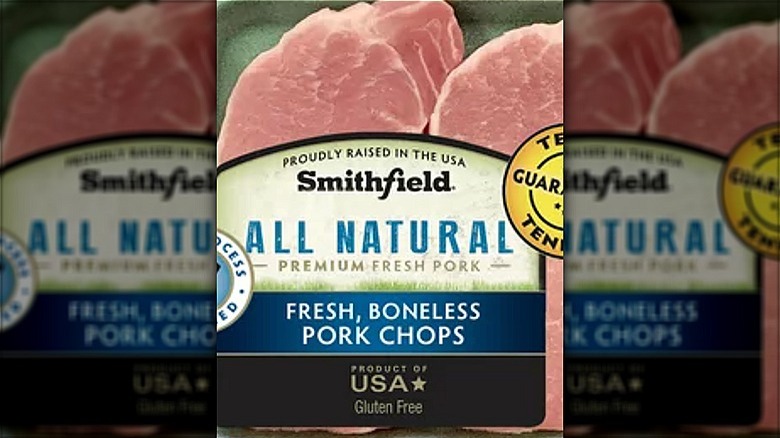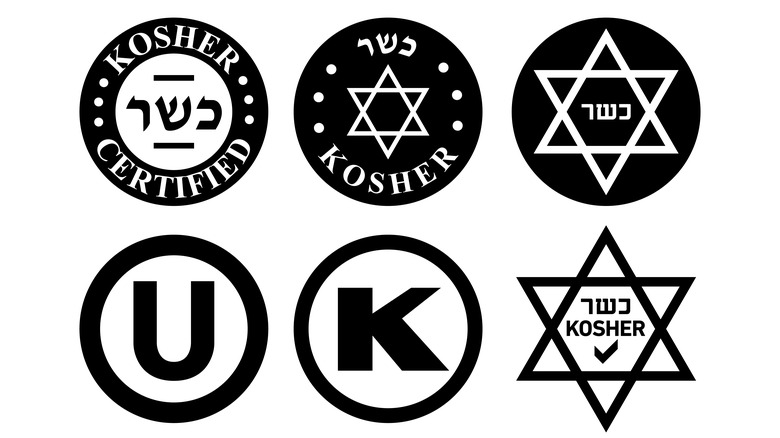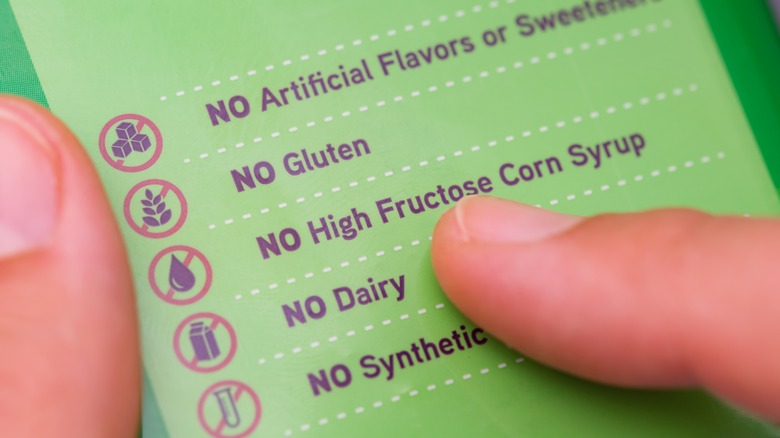The Ultimate Guide To Understanding Meat Labels
Food labels are intended to provide valuable information to a consumer so that you can make the most informed purchasing decisions possible. There are several types, such as the nutrition facts label, regulated by the U.S. Food and Drug Administration, which was first required by the Nutrition Labeling and Education Act of 1990. Then there is the front of package labels, which are not regulated for the most part, except for a handful of specific items required by the USDA to appear on meat labels, including product name, official inspection legend with the establishment number, address line, net weight or quantity, and ingredient statements. Finally, food allergen labels were instituted in 2004 under the Food Allergen Labeling and Consumer Protection Act, requiring that each of the nine major food allergens be clearly indicated with the name and source of said food allergen.
Extraneous information, particularly on meat, can be downright misleading. Some are claims closely monitored by and requiring authorization from the USDA, such as raised without hormones, grass-fed, and free-range. These are more ambiguous than they should be. Others are statements by the manufacturer to help promote its food as healthy. These health halos can entice buyers into spending more money for a product they believe is superior without any validity to said claims. To help make some sense of these meat labels, let's look at what some of the most common statements actually mean.
Organic
According to the USDA, for meat to be called organic, animals should be reared in circumstances that are most like what they would encounter in nature, meaning they have access to the outside, though there is no guarantee they will use it, get 30% of their nutrition from grass, ruminants only, are given 100% organic food, and are free of hormones or antibiotics.
Organic meat producers must undergo certification per The Organic Food Production Act conducted by the National Organic Program. From there, according to Michigan State University, four categories of organic certification can be acquired: "100% organic," or "organic," where 95% of ingredients are certified organic, "made with organic ingredients," 70% of ingredients are certified organic, and "less than 70% organic ingredients." What this doesn't ensure is what happens once the animal is processed. At this point, they can be supplemented with colorants or flavorings that are not organic.
All-natural / 100% natural
For meat to be considered all-natural or 100% natural, the USDA states that A product containing no artificial ingredient or added color is only minimally processed, and it should remain minimally processed, meaning not intrinsically altered. A qualifying label must accompany this term, for example, "no artificial ingredients; minimally processed." While this sounds good in theory, it does nothing to regulate how the animals are being raised.
It can be organic or not, fed any grain or fodder, and given added growth hormones or antibiotics. There is no certification for this label, nor does the USDA or FDA, for poultry and eggs, regulate this term in any meaningful way, meaning practically anything goes. Note: This is not the same as a product labeled naturally raised, which does have a certification program regulated by the USDA to ensure no added growth hormones, antibiotics, or animal by-products are given to the livestock.
Free range
Free range or free roaming is one of the more purposeless labels on meat products. It is only regulated by the USDA for poultry, but not egg-producing poultry, and even so, very loosely. The regulation states that poultry should be "allowed access to the outside," but it doesn't say what that looks like. There is no minimum amount of time the animal should spend outdoors, nor does it indicate that the animal must spend time outside. In other words, just because a chicken has a door from its enclosure to the great outdoors, it doesn't have to use it to be called free range. And as far as other meat or eggs are concerned, if a label states that the animal is in a free range, that's most likely a case of health halo labeling to encourage you to purchase the meat.
Cage-free
Cage-free is even more ambiguous and meaningless than free-range, where poultry is concerned. Outside of USDA organic certification, which does require poultry to be given access to the outdoors, the term cage-free is not regulated in any way. It is a feel-good marketing strategy to make you believe your chickens lived a life free to roam about without imprisonment. In reality, just because these animals aren't being restrained in battery cages, which have been outlawed in several countries in the world, including the EU but not the U.S., they can still be restricted within warehouse-like enclosures where they may not be getting that much more space to spread their wings, or guaranteed access to the outdoors.
Grass-fed / Pasture-raised
Grass-fed refers to ruminants fed exclusively a diet of grass or forage and no grains. Pasture-raised or pastured refers to animals who have spent time outdoors eating grass and fodder. Pasture-raised is an unregulated term, leaving its interpretation up to each producer. When it comes to the term grass-fed, things are a bit more ambiguous. While producers wanting to include this term on their labels must submit such a request to the USDA's Food Safety and Inspection Service for approval, beginning in 2016, the Agricultural Marketing Service branch of the USDA no longer regulates the accuracy of these claims. This means producers may finish their cattle on grain to help them gain weight closer to slaughter. Grass-fed also does not indicate whether or not the animal was given antibiotics or hormones or what its living conditions were like.
Grain-fed / corn-fed
Grain-fed or corn-fed is also not regulated, although it may evoke strong feelings. For some, it is equated with feeding animals a diet antithetical to their natural diet, like grass-fed beef. For others, it connotes a specific quality of meat that is tender, has more marbling, and may be juicier than grass-fed beef. Grain-fed beef can be labeled as organic, all-natural, or both, as long as the grain fed to the animal is organic and it was not treated with any artificial flavorings, ingredients, or colorants after slaughter, making it minimally processed. This label may be more a matter of taste than anything else, which makes its use a zero-sum game.
Made in the USA / Product of the USA
This particular label is somewhat infuriating. Under the current law, this label is strictly voluntary, often applied to meat imported but slaughtered in the U.S. and meat that has been imported but rewrapped or has otherwise undergone additional handling. In other words, it gives Americans a false sense of security in believing that the meat they are consuming was born, raised, slaughtered, and processed in America when up to 6% of all red meat and poultry consumed in the U.S. is imported, and 12% of all red meat, poultry, and eggs purchased in the U.S. have these labels. While a new rule was proposed by federal agriculture officials to change this rule to strictly refer to domestically produced meat, it has yet to go into effect.
No antibiotics added
According to the USDA, no antibiotics added labeling "may be used on labels for meat or poultry products if sufficient documentation is provided by the producer to the Agency demonstrating that the animals were raised without antibiotics." If you see labeling to this effect, the labeling should be accompanied by either a USDA Processed Verified shield or USDA Organic seal on the package. Any other claims cannot be guaranteed or verified. Additionally, contrary to popular belief, this statement does not encompass the use of hormones or any other pharmaceuticals. And while regular antibiotic use is of concern due to the increase of antibiotic-resistant strains of bacteria, this does not prevent a producer from treating a sick animal with antibiotics as long as adequate time is given post-antibiotic use for the animal to pass the antibiotic through its system.
No hormones added / no hormones administered
The claim regarding no hormones added is complicated. The USDA prohibits the use of hormones in the rearing of pork and poultry. Any claims as such on a label are misleading and gimmicky. These should legally be followed by the phrase "Federal regulations prohibit the use of hormones." For beef, however, the words "no hormones administered" may be added to a label if the producer has undergone verification by the USDA by submitting supporting documentation. Any label expressly stating that meat has no hormones in it is false. All animals naturally have hormones. Supplemental growth hormones that are given to animals to help promote more rapid growth, larger size, or more robust milk production is in question here.
Humanely raised
While the USDA requires meat producers to submit substantiating documentation to verify any animal raising claims, such as "humanely raised," before including such claims on a meat label, the standards required to meet the criteria are modest. They also aren't enforced. While third-party certifications can be obtained by producers, these are unregulated and inconsistent, making them useless from a consumer awareness perspective. Short of establishing more rigorous enforcement and qualifications to meet this kind of claim, your best option is to purchase meat from a local meat producer with transparent animal husbandry practices rather than paying a premium for this kind of label.
All vegetarian diet / vegetarian fed
Like other animal-raising claims, terms such as all vegetarian diet or vegetarian fed are included under the USDA's "Animal Raising Claims Labeling Guidelines," which require documentation with substantiating evidence to prove a producer is following protocols for an all-vegetarian diet before putting it on its label. These claims are seldom verified by on-farm inspections, making organic labeling a better bet to guarantee animals are not being given feed including animal by-products of any kind, such as waste from slaughterhouses, animal feces, manure, and any other animal product that is unsafe for humans to eat. One thing to consider before buying a product based on this label — it means the animal was raised in confinement and fed commercial feed rather than pastured.
GMO free / non-GMO
Understanding non-GMO labeling on meat is complicated due to several overlapping laws regarding mandating labeling bioengineered foods, existing USDA organic regulations which automatically require animals to be fed non-GMO feed, and a regulation allowing organic meat and poultry producers to file paperwork with the Agricultural Marketing Service to include additional claims about their meat being non-GMO. The labels are essentially redundant and perhaps misleading, even if they are not inaccurate. They are designed to inform consumers who do not realize that organic certification guarantees meat and poultry are non-GMO. Because of this redundancy, all non-GMO meat labels must include statements indicating that USDA organic regulations already restrict the use of genetic engineering in producing and feeding animals designated as organic. Confused yet? That's what producers are banking on. The bottom line: You may be paying a premium for this added language for no reason.
Fresh
The terminology fresh or farm fresh may be our favorite misleading label on meats of them all. Unless the labeling refers to poultry, it means absolutely nothing. Where poultry is concerned, fresh defines poultry that has not been stored below 26 degrees Fahrenheit. Poultry kept below 0 degrees Fahrenheit must be labeled as frozen. Poultry that has been held between 0 degrees and 26 degrees isn't required to have any labeling, which is perplexing. Otherwise, any farm can indiscriminately use the health halo term fresh to conjure images of their animals grazing in the field as a feel-good marketing ploy to make you purchase their product. It is false advertising that grossly misleads consumers. If you want to guarantee some modicum of quality of life for animals, opt for organically certified meat or find a local meat purveyor that is transparent with their animal husbandry protocols.
Kosher
According to the USDA, kosher labeling "may be used only on the labels of meat and poultry products prepared under rabbinical supervision." That is all it says, which begs the question, how exactly does this occur? As we researched it, kosher labeling is further regulated in most instances at the state level, with various independent organizations offering additional oversight to ensure animals labeled as kosher are being treated and slaughtered humanely and using rituals established under Jewish law. To guarantee that a product is kosher, consumers should look for clearly marked kosher symbols denoting the certification agency involved, including KSA Kosher, OK Kosher, Triangle K, and Orthodox Union or OU. Without additional labeling, we may be suspect of the validity of the kosher status of the meat being sold.
Halal / Zabiah Halal
Similarly to kosher, halal or zabiha halal is defined by the USDA as those meat and poultry products that have been processed in plants federally inspected and certified as adhering to Islamic law and under the guidance of Islamic authority. Further regulation may be conducted at the state level, though ultimately, certification of halal foods should be done by a third party to guarantee there is no cross-contamination between halal and haram animals, slaughter occurs under Islamic law, and processing is done in a facility that is halal certified. Consumers should seek out additional symbols and labels indicating the certification body involved in determining the Halal status of a package of meat. The most common certification bodies are the Islamic Food and Nutrition Council of America or IFANCA, Halal Food Council USA, and HalalCo. Without these symbols, it is advisable to assume meat is not guaranteed to be halal.
Allergen labeling
While the Food Allergen Labeling and Consumer Protection Act, or FALCPA, does not expressly require labeling meat, poultry, or eggs, voluntary labeling is encouraged by the USDA Food Safety and Inspection Service. Under the Federal Meat Inspection Act or FMIA, the Poultry Products Inspection Act or PPIA, and the Egg Products Inspection Act or EPIA, any ingredients used in the manufacture, processing, or formulation of a meat, poultry, or egg product that falls within the category of the nine major food allergens must be indicated on a label. The label should include what allergens the meat package might contain and the source of said allergen, for example, whey made from milk. Additionally, information regarding the product manufacturing environment may be necessary if the meat got processed in a facility that also processes one of the top allergens. This explains why you might see a gluten-free label on a steak that seems out of place.
